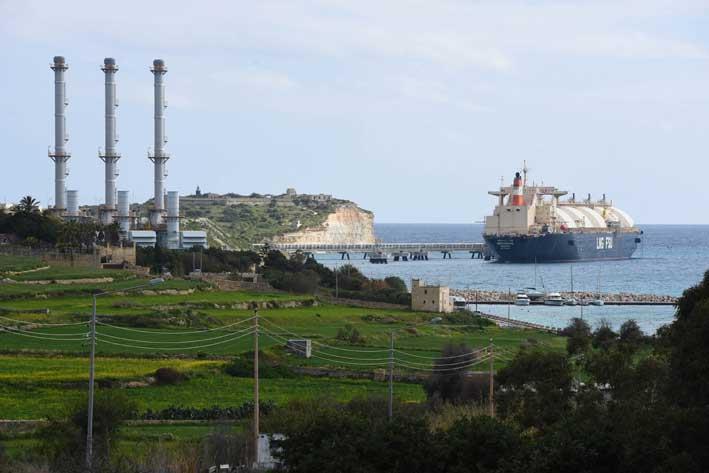Despite the growing number of people who have come to understand why their bills are getting bigger, and despite the fact that Malta enjoys one of the lowest costs per unit of electricity in the EU, others are still coming to grips with what the whole issue is all about.
In addition to the key women who have sounded the alarm over unfair billing practices, such as Patricia Graham who runs ‘Up In ARMS’ – a group tackling billing issues, and Johanna Axisa MacRae who runs Malta Tenant Support – a group that deals specifically with unfair practices against those renting property, another woman has taken to social media and started the ball rolling to highlight unfair practices in the general billing system.
Economist Marie Briguglio raised the issue of how ARMS has been cutting up the various electricity quotas per day rather than calculating consumption on an annual basis, meaning that some households are jumping to the 16c, 35c and sometimes even 60c on a daily basis.
How does the ARMS billing system work?
ARMS Ltd uses a stepped tariff system with the underlying principle being that the more you consume, the more you pay. There are five separate bands, as highlighted on its website.
In all, 2,000 units are charged at 10c5 (band 1), 4,000 at 12c9 (band 2), 4,000 at 16c (band 3), 10,000 at 34c2 (band 4) and, lastly, in excess of 20,000 units are charged at 60c7 (band 5).
The various tariffs are charged per household, and not per person.
Based on a legal notice, ARMS charges households on ‘cumulative consumption per annum’ which ‘may be billed on a pro rata basis’.
A separate legal notice provides for ARMS to issue bills covering any number of days it may deem fit:
“Residential Premises Service shall be billed, for any period or periods as the distribution system operator may, from time to time determine, in accordance with the following charges and tariffs,” followed by the aforementioned tariffs.
In effect, this means that ARMS can bill based on any number of days it chooses.

How does ARMS calculate its bills?
A significant proportion of people living in Malta are now receiving bills every two months based on actual consumption. Previously, most people were receiving bills every two months based on estimates and would then receive a bill for six months based on actual consumption. A reconciliation exercise would be carried out to correct any over or under-payment.
With the bills being issued every two months, on actual consumption, ARMS are chopping up the various electricity bands and rationing them per day.

What does it mean to ‘ration’ the different electricity bands?
As an example, take the 2,000 units at 10c5. What is happening is that those 2,000 units are divided by 365 days to reflect one calendar year, and are then multiplied by the number of days covering the bill, around 60: (2000/365 *60).
This exercise is calculated for each electricity band in order to ascertain the ‘quota’ of each rate permissible per billing period. For example: 2,000 units divided by 365 days provides for each household to consume 5.479 units per day at 10c5. For a bill covering 60 days, those 5.479 units are multiplied by 60 days providing for 328 units in the entire billing period to be charged at 10c5.
On average, a 60-day billing period will charge each household 328 units at 10c5; 658 units at 12c9; 658 units at 16c; 1,644 units at 34c2 and anything above 3,288 units at 60c.
When looking at the quotas per day, each household has 5.479 units at 10c5; 10.959 units at 12c9; 10.959 units at 16c, 27.397 units at 34c2 and anything beyond 54.794 units at 60c.
Therefore, when calculating your household’s income, ARMS chops up the electricity band based on the number of days in a particular billing period and calculates the bi-monthly ‘rations’ such as the aforementioned example depicting the 60-day rations awarded to each household.
If your household consumed 1,000 units of electricity in the space of two months, 328 units would be charged at the cheapest rate amounting to €34.34, 658 units cost €81.51 and the last 14 units would cost €2.25 at the 16c tariff.
Despite not reaching the 2,000 unit threshold, the hypothetical household still moved up to the more expensive tariffs of 12c9 and 16c.

What is the outcome of frequent bills and this system of quota rationing?
The outcome is a material impact on the amount due to ARMS for a particular billing period. More frequent invoices with the electricity bands being chopped up per day makes it that much easier to move onto higher electricity tariffs despite not having consumed more than the thresholds for each band as advertised on the ARMS website.
In periods of high consumption, such as the cold months of winter and the excessively hot summer months, households that make use of air-conditioners and other appliances to control the temperature in their homes will be shocked to see they have moved onto higher electricity rates every day. The shorter billing period means that such households will not be able to offset the high consumption periods with low consumption periods by making up for periods with disproportionately high use with others where little electricity is needed.
Worse still, should a billing period come during a typically low consumption period, say March and April where open windows and longer daylight hours save on electricity consumption, failing to make use of the full ration for the billing period will result in the loss of cheap rates. Going back to the earlier example, if the household in question consumed just 250 units in a 60-day period, those extra 78 units that were not consumed will not be carried forward to the next billing period but will simply be lost (250 +78 = 328 units at 10c5 for 60 days).

What has changed in the way that ARMS is billing its consumers?
After this issue generated some interest, ARMS told this newsroom, and released a statement to say that it has not changed its billing system since 2009. This appears to be the case in the way it makes its calculations however there has been a significant change, and that is the frequency with which the state water and electricity billing entity issues invoices.
Previously, many people argued, with some justification, that receiving bills based on actual consumption either every six months or annually was too much of a shock to the system in terms of financial planning. Many people failed to make provision throughout the year and were slapped with bills covering long billing periods.
It would appear that there is a link between the introduction of smart meters and the issuance of bills every two months. Having said that, some households – despite having the new smart meters – are receiving ‘no readings’ every two months and then an actual bill covering a six-month period.
Others are still receiving estimates and have not yet been brought into the two- month bills based on actual consumption. The issuing of two-month bills is not based on locality either, with consumers informing this newsroom that they are receiving bills on actual consumption bi-monthly whereas their neighbours still receive them every six months with ‘no readings’ in-between.
One reader maintained that he received bills every two months based on actual consumption before his smart meter was installed. When asking to shed some light on how it chooses to bill consumers, ARMS maintains that “everybody” is billed every two months and that it is using the same system as that introduced by the Nationalist Party’s Water Services Corporation.
Bills seen by this newsroom, and first-hand accounts from various sources who have had enough of the confusion surrounding ARMS, contradict statements made by the state entity in a big way, but it still maintains that the billing system remains unchanged.
Does this quota-rationing system have a negative impact on all consumers?
In short no, not everybody. If yours is a relatively small household, and you consume your electricity fairly consistently throughout the year, this will not have an impact on you, meaning that you will not have noticed an increase in your bills.
This is because if you are consuming a comparable number of units of electricity each day throughout the year, no matter the season, then you are not going to suffer moving up onto the most expensive electricity rates or lose out on the cheap units. This is because there are no spikes and dips and therefore no need for longer billing periods to offset those spikes or dips.

What are the authorities saying about this?
Energy Minister Joe Mizzi stresses that he has brought all complaints to the attention of the relevant entities and is awaiting feedback. He took umbrage at the suggestion that electricity rates have not been reduced under the Labour government, which he says they have. The issue surrounds how much people are being charged on their bills and not the cost of each unit, as can be seen above.
Parliamentary Secretary for Consumer Protection Deo Debattista failed to give any form of reply to the question of how an entity in an abusively dominant market position could be allowed to do this or whether he was aware of the discriminatory pricing practiced. The questions were sent over two weeks ago.
The Malta Competition and Consumer Affairs Authority (MCCAA) has also failed to reply to – or even acknowledge – our questions. Correspondence sent to us by a reader, however, showed how the MCCAA is reluctant to comment due to the pending court case on the issue, after the case had been filed in court. When the issue was raised before a relevant court case, the MCCAA simply failed to answer in a satisfactory way.
What is the solution?
Arguments for receiving bills more frequently are justified, as many people struggle to save and make provisions throughout the year in order to plan for annual or bi-annual bills. Others have also argued that it is unreasonable to expect ARMS to bill every six months or annually because no businesses ever provide such concessions due to issues with cash flow affecting their ability to operate.
The most straightforward answer, which has been argued by economists such as Dr Marie Briguglio and other academics, is for ARMS to carry out a reconciliation exercise at the end of each year and, at the very least, provide credits for any over-payments based on a household’s annual consumption.
At no point has any authority from any successive government explained to its consumers – who have no choice but to purchase their water and electricity from the state – that more frequent billing would result in higher bills for a large proportion of households.